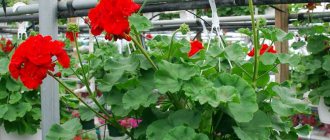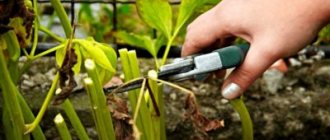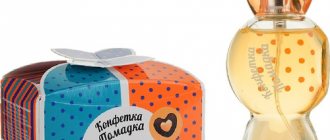Useful tips
Flowers are given on special occasions, and often without them, just to cheer someone up. They decorate halls for celebrations and gifts. However, fresh flowers tend to fade quickly.
In addition, dried flowers are an inexpensive, but no less wonderful alternative to a living bouquet. Lavender and roses, for example, retain their scent for a long time, delighting you, your loved ones and guests with it.
In this article we will tell you how to preserve the memory of a wonderful moment for a long time by drying the flowers that decorated the holiday of the soul and heart.
Is it possible to keep dried flowers at home?
The question is quite vague, as it affects several areas of life.
From an esoteric point of view, a herbarium is a treasure of energy that can give a person natural warmth. They improve immunity, maintain health and prolong life.
According to the teachings of Feng Shui, any cut plants bring withering and death, so it is not recommended to keep dried flowers at home.
There is an opinion among scientists that dry buds accumulate a lot of dust, which is difficult to remove from the surface, so keeping a herbarium in an apartment is contraindicated for asthmatics and allergy sufferers.
Collection rules
In order for flowers to retain their bright colors and last a long time, they need to be cut correctly. Also keep in mind that not all plants will look good when dry.
What flowers can be dried?
It is believed that the most popular flower for drying is the dark burgundy rose. However, experienced herbalists and flower growers know that not only this species is capable of maintaining color for a long time. Plants that are great for drying and retain color for a long time include:
- peonies;
- apricot blossom;
- marigold;
- pansies;
- forget-me-nots;
- daisies;
- muscari;
- lilac;
- yellow tulips;
- lilies;
- hydrangeas;
- gypsophila;
- echinacea;
- immortelle;
- delphinium;
- gomphrena spherical.
Lighten up a little:
- red tulips;
- roses with small pink buds;
- rose hip.
They don't retain color at all:
- carnations;
- periwinkle;
- Japanese quince;
- nettle;
- all types of violets.
Please note that poppy is the most fragile plant to dry.
When is the best time to cut flowers for drying?
The beauty and durability of a dry bouquet is determined by several basic criteria. When collecting plants, observe the following rules:
- cut flowers after lunch, when the dew has completely disappeared from their surface;
- For the procedure, use special garden shears;
- cut the stem at a distance of 2–3 cm from the ground;
- choose a plant with a bud that has not yet opened, otherwise the petals will fall off during the drying process.
Make sure that the plants do not have rotten or damaged leaves, stems or flowers.
Preparation
Before the drying process, properly prepare the future herbarium.
- Place the collected flowers on the surface and remove excess leaves and thorns.
- Pack the plants by variety and group them into bouquets of 10 pieces.
- Leave large species to dry separately.
- Attach wire to thin stems so as not to break the dried composition in the future.
- Secure the ends of the stems in the bouquet with an elastic band. Make sure that it does not sit too tightly, otherwise moisture will accumulate in the plants and it will rot.
In general, preparation takes very little time and does not require special skills.
What types of hydrangeas can be turned into dry hydrangeas?
We select hydrangea varieties suitable for drying.
The illustration for the article is used under the standard license ©sadvokrug.ru Some hydrangeas have difficulty drying. Below is the optimal list of hydrangea varieties that can be dried.
Hydrangea macrophylla: “Generale Vicomtesse de Vibraye” (“Generale Vicomtesse de Vibraye”, “Ayesha” (“Ayesha”), “Lanarth White” (“Lenart White”), “Madame Emile Mouillere” (“Madame Emily Mouillere”), "Mariesii Perfecta"
Tree hydrangea: “Annabelle” (“Annabelle”).
How to dry flowers for decoration
To add coziness to your home or decorate a room for a celebration, it is not necessary to resort to the services of florists. You can dry flower arrangements yourself and use them as unique decorations. The drying procedure can be carried out in several ways.
Hanging drying flowers
The simplest and most cost-effective method. To do this, you will need a dry, dark and well-ventilated room, as well as tools for hanging bouquets, such as hooks or nails.
To make you happy with the result:
- maintain the room temperature from +10 to +18 degrees;
- hang bouquets at a distance from each other, 20 cm below the ceiling;
- wait until the compositions are completely dry (this usually takes 2-3 weeks);
- Cover the finished herbarium with hairspray to secure it.
Drying flowers in the microwave
Drying flowers in the microwave is simple, effective, and most importantly fast. It is surprising that when dried in this way, the buds do not lose color or shape at all. To dry, you will need silica gel or crystal cat litter.
- Pour some silica gel into a microwave-safe container.
- Place the plant on it and carefully add another portion of the substance.
- Place the container in the microwave and press start, setting the timer for 1-2 minutes.
- Check the condition of the bud every 30 seconds.
- When the flower is completely dry, remove the container from the oven and let it cool without removing it from the filler.
How to dry flowers in semolina
Semolina absorbs liquid well, so it is ideal for drying plants.
Procedure:
- Place a layer of semolina 1.5-2 cm thick at the bottom of the container.
- Place flowers with large buds head down, and those with elongated buds head up.
- Cover the plants completely with semolina.
- Do not cover the container with a lid and set it to dry in a well-ventilated place.
- In 5–14 days the herbarium will be ready.
How to dry flowers in salt
It is best to dry small flowers in salt, such as chamomile, bells or rose hips. Fine “Extra” salt is perfect for this procedure.
Step by step guide:
- Select a container that matches the size of the bud; if it is too large, more salt will be needed and the possibility of damaging the integrity of the flower will increase.
- Add a small layer of salt to the bottom and place the plants on it.
- Gently sprinkle the rest of the salt on top.
- Keep the plant in salt for 30–35 days, checking its condition periodically.
Press drying flowers
The good thing about this method is that you can dry a large number of bouquets at one time. Ready-made compositions are great for placement in panels. For the procedure you will need paper napkins, 2 sheets of plywood, and a weight.
Action plan:
- Wrap each plant in a napkin.
- Place the finished flowers on one sheet of plywood.
- Cover the workpieces with a second sheet and press down with a weight.
- Once a day, replace the paper that has absorbed moisture from the plants with new one.
- After 5–7 days, remove the finished bouquets and use them for their intended purpose.
Using an iron
This method is suitable for drying small flowers with flat buds. Using an iron you can dry clematis, pansies or primrose. For the procedure, you will need a paper napkin or tissue paper.
Action plan:
- Place the flower between two sheets of paper.
- Iron the surface thoroughly.
- When the paper gets wet, replace the sheet with a new one.
- Evaporate the moisture from the plant until it is completely dry.
Drying flowers in a convection oven
The convection function in the oven will help you quickly dry any type of plant. For the procedure you will also need a wire mesh with small cells.
Step by step guide:
- Place the mesh on the oven rack.
- Stick one flower into each cell so that they are in a vertical position.
- Place the grill in an oven already preheated to 38–40 degrees.
- After 7–8 hours, remove the pieces from the oven and cool.
Please note that you cannot use a conventional oven in this way.
Drying flowers by immersion in desiccant
This method is suitable for drying flowers with large buds. As a desiccant, you can choose any material that absorbs moisture well. Silica gel, cat litter or borax with flour (in proportions 1:6) are suitable.
Scheme of work:
- Add a small layer of desiccant to the container.
- If desired, add a little salt at the rate of 15 g of salt per 1 liter of substance. This will help preserve the richness of the bud.
- Place the flowers in a container and cover with a layer of desiccant.
- Please note that if you are using borax, you do not need to close the lid of the container. Otherwise, close the container tightly.
- Wait for the plants to dry. On average, drying takes 3-5 days when using silica gel or cat litter, and 10 to 14 days when using borax.
Sand and cotton wool
Such materials absorb moisture well, so they are excellent for drying flower arrangements. However, this method has a slight drawback - you can only use buds without a stem.
Prepare the sand in advance: rinse in water, bake in the oven and sift through a sieve. It must be perfectly clean and dry.
Cotton wool can be used immediately for the procedure.
Action plan:
- Pour some sand into a cardboard box or line the bottom with cotton wool.
- Place the buds on a layer so that they do not touch each other.
- Gently sprinkle the flowers with sand or cover with cotton wool.
- Leave the plants to dry for about 2-3 weeks.
- During the drying process, check the condition of the buds and add filler if necessary.
As a result, the petals become like paper and do not break when touched.
Paraffin method
Using paraffin, you can create unique compositions that closely resemble natural bouquets.
The method is quite labor-intensive. Melt the paraffin and carefully apply it to each petal using a brush. Let the flower dry.
Glycerin preservation
Using glycerin you can create original dried “wet” flowers. The method is only suitable for preserving buds.
Operating procedure:
- Mix glycerin with hot water in a 1:2 ratio.
- Place the buds in an airtight container and fill with the glycerin mixture.
- Close the container tightly with a lid.
- After 2-3 days, remove the compositions from the solution and blot with a paper towel.
As a result, you will get original elastic and shiny buds.
Using glycerin you can create a unique design object. Place 1 flower or small arrangement in a beautiful jar and fill with glycerin. Close the container tightly and decorate to your liking.
Quick drying
If you need to dry the flowers quickly, use a conventional oven. To do this, preheat the oven to 60 degrees and leave the plants in it for 60 minutes. Keep the oven door open during drying. At the end of the procedure, let the bouquets cool and use for their intended purpose.
Making a flavoring
Making your own fragrance is quite simple, but it will look original and fill the house with an aroma that you choose yourself.
For this we need:
- 25 g gelatin;
- 100 ml hot water;
- 2 tablespoons of water;
- essential oil (to your taste).
Mix gelatin with hot water and add salt. When this solution is ready, you need to add essential oil there at the rate of 10 drops per 2 cups of liquid. However, if you want to achieve a stronger aroma and you like such smells, then feel free to add more.
Preserved flowers can be not only a beautiful decoration, but also an excellent gift. Making them is not at all difficult, and they will delight you for many years.
Which method should I choose to ensure that the flowers retain their shape?
To ensure that flowers retain their shape and can be placed in a vase as fresh, use techniques for drying that have minimal impact on the integrity of the plants.
Air drying is considered the best way, since no pressure is applied to the bud.
You can also use drying methods in bulk solids, but you must be very careful when doing this.
Paraffin or glycerin will help preserve the shape, and even the original color and shine of the plant.
Preserving roses
Many, having watched the movie “Beauty and the Beast,” have repeatedly thought about how to preserve roses in glycerin so that they would also stand in such an original container, without water, and not fade.
To do this, you need to select the desired flower and place it in the solution, which we prepare according to the above recipe and adhere to the same rules. It should stand in it until it is completely saturated. After this, it can be placed in a special container, the fallen petals, like in the film, are also embalmed by placing them in the solution along with the rose. Then we lay it out as decoration. The decoration is ready.
The process of preserving flowers takes from two weeks to two months.
How to dry flowers for epoxy resin
By filling flowers with epoxy resin, you can end up with an original glazed decoration with a glossy surface. Petals or buds are completely dipped in the substance or covered with a thin layer using a brush.
In order for the product to turn out neat, the flowers must be even and completely dry, otherwise they will lose their color over time.
For bulk drying, desiccant or semolina is best. If the flower has different thicknesses of petals, dry the bud only in cotton wool.
How to dry flowers from Matrona of Moscow
It is believed that flowers from Matrona of Moscow have miraculous powers. They are usually dried and:
- used as home amulets;
- make tea;
- applied to sore spots on the body;
- used for rituals and worship.
Rose buds brought from Matrona of Moscow are best dried in a suspended state in a well-ventilated area. However, it makes no difference which drying method is chosen, the main thing is to preserve the bouquet and believe in its unique power.
Features of drying different types of flowers
For the drying procedure to be effective, please note that some varieties of flowers should only be dried in a certain way, as well as properly prepared. For example:
- Before drying, hold roses over steam for 15–20 minutes;
- to preserve small lilac flowers, use semolina, lowering the branch with the buds down, or put them under a press;
- It is better to dry bird cherry in separate branches, so they dry faster;
- Jasmine petals are very fragile and delicate, so they can only be dried naturally, without heat treatment;
- White apple buds may turn brown after drying, so choose pink varieties.
Tips for preserving a dry bouquet
To make dried flowers pleasing to the eye for a long time, follow these simple recommendations for storing them:
- do not keep bouquets in places exposed to direct sunlight, otherwise they will become too fragile;
- It is better not to place compositions in highly lit places at all, as they will quickly lose color;
- Ventilate the room regularly and monitor the humidity level, since neither living nor dried plants like dry air.
Caring for dry buds is not difficult, but since they quickly accumulate dust on the surface, remove it regularly using a rubber syringe. To reduce dust on your plants, coat the petals with hairspray or store them under a glass cover or in a transparent box.
What can be made from dried flowers?
It all depends on your skills and imagination. The simplest option is to assemble the composition and put it in a vase or use it as decor for a special celebration.
From dried flowers you can make a panel or even a picture with a certain plot, since the variety of shapes and shades is quite large.
An original idea would be to fill petals or buds with epoxy resin, as a result of which original decorations are created.
How much money do you need to invest in your business?
Starting your own glycerin flower making business requires minimal capital investment as it is a home-based business.
To avoid problems with the tax office, it is worth registering as an individual entrepreneur or as a self-employed citizen - if this tax regime is valid in your region. The tax when working with individuals will be only 4%. You can apply for free online on the tax service website or through applications of banks that support this program (Sberbank, Alfa Bank, Tinkoff, etc.).
Your own kitchen is suitable as a room for preserving flowers, which will save on rent. The most expensive item of the enterprise is the purchase of floral products. If you have a summer cottage, in the summer you can use flowers grown in the beds. This will significantly reduce costs.
Here are the main expense items.
| Expense item | Cost, rub.) |
| Registration | 800 |
| Flowers | 7.000 |
| Kettle for boiling water | 2.000 |
| Decor elements | 1.500 |
| Transparent dishes | 4.000 |
| Knife, scissors | 1.000 |
| Cutting boards | 400 |
| Garbage bags | 200 |
| Glue | 100 |
| Total | 17.000 |
You may be interested in: An interesting and unusual business idea - selling lamps in the shape of animals
Features of drying flowers for tea
Many flowers can be used not only for decorative purposes. Some varieties can be added to tea for a special aroma or for healing properties. For example:
- chamomile is used as a pain reliever;
- linden is used for colds;
- thyme is added for bronchitis;
- rose petals strengthen the cardiovascular system;
- Jasmine and lemon balm give tea an unsurpassed taste and aroma.
It is better to dry plants in natural conditions. In this case, you can perform the procedure both with twigs and with individual petals. Store dried flowers in a tightly sealed container.
There are many ways to dry flowers. You can use the drying method in natural conditions, in bulk or under pressure, in an oven or microwave. The main thing is to properly collect and prepare the plants before the procedure and wait until they dry completely.
Advertising and sales market
To sell flowers in glycerin, you can use various sales channels:
- Internet. Creating your own website on the Internet, as well as accounts on social networks. Publish photos, price lists, information about promotions, and customer reviews on your website. Hold promotions and giveaways with a flower in glycerin as a gift. This will help attract new customers with minimal investment. If you have an advertising budget, use contextual advertising for your website and targeted advertising for social networks.
- Word of mouth is the best way to attract customers.
- Intermediaries. Selling products through florists, gift shops, and home-made distribution organizations means that you will make less profit compared to selling it yourself. However, the intermediary ensures the sale of products. To conclude a contract, you will need to go directly to more than one store.
- Your own store. Opening your own store, stall or small outlet in a supermarket will require additional investment and effort on your part.











